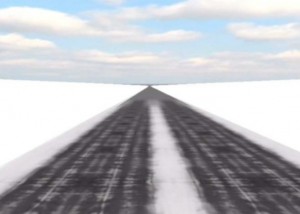The Swedish National Road and Transport Research Institute (VTI) is constantly researching ways to develop and improve the ability of its driving simulators to simulate reality. One such piece of research is WinterSim, a three-year doctoral project aiming to recreate certain properties specific to winter road surfaces and winter driving.
“The project is intended to simplify and improve our means of testing winter road surface conditions in driving simulators. Winter road surface conditions are a fact of life for us here in the Nordic region, and that makes this project especially relevant. Numerous potential stakeholders could benefit from our results, stakeholders ranging from highway operators to companies in the automotive industry”, says VTI project manager and researcher Fredrik Bruzelius.
Cooperation with the automotive industry
The project is a cooperative effort between the Volvo companies and VTI. It is important that the automotive industry be able to study winter road surface conditions when, for example, developing active safety functions. Not only does the driver of the simulator need a realistic environment, but the testing of the actual vehicle function requires the greatest possible realism as well.
The project has so far focused on vehicle motion and how to reproduce it in the driving simulator. Under winter road-surface conditions in the context of vehicle motion, the road surface often becomes more uneven to drive on and skidding is more likely during normal driving. Just how imminent a skid may be has been studied in great detail.
Difficult to simulate skidding
Given the limitations often encountered in driving simulator motion systems, a skid or imminent skid is extremely difficult to simulate. It is often necessary to make compromises and compare different motions with one another with the help of scaling and filtering. The results are difficult to interpret, and fine-tuning them is complicated and time-consuming.
“Rather than proceeding from the motion system and its limitations, we have tried to consider what elements of vehicle motion we can actually simulate. We have found an important component of this motion that enables more transparent compromises. You could say that it links the vehicle’s yaw motion to its lateral motion via a so-called instantaneous centre of rotation”, says Bruzelius.
Surface simulation
The next step in the project is to study the effect of the tyres on motion, particularly how they interact with the road surface. One hypothesis is that it is important to consider that when a car is driven on snow, some of the underlying snow will be pushed along beneath the tyres. The unevenness of the road and how this is represented in the simulator will be studied as well.
The researchers have used VTI’s Sim IV driving simulator in Gothenburg for the testing and trials in the project. The project, which began in 2014, is nearly halfway towards its completion, as is doctoral candidate Artem Kusachov towards his licentiate degree. The project is funded by the ViP competence centre, Test Site Sweden, and VTI’s in-house doctoral programme.
Text: Eva Åström
 Contact: Contact:Fredrik Bruzelius fredrik.bruzelius@vti.se VTI, Sweden |







Follow us: